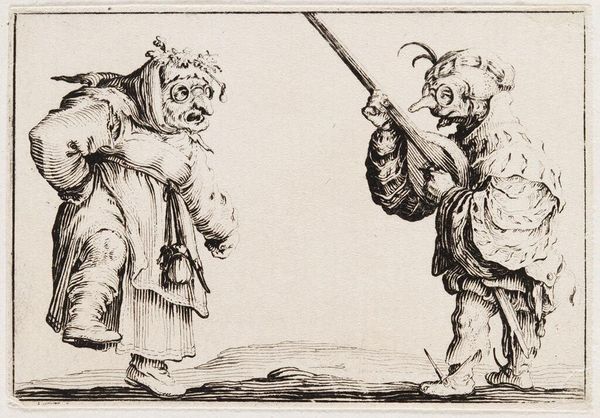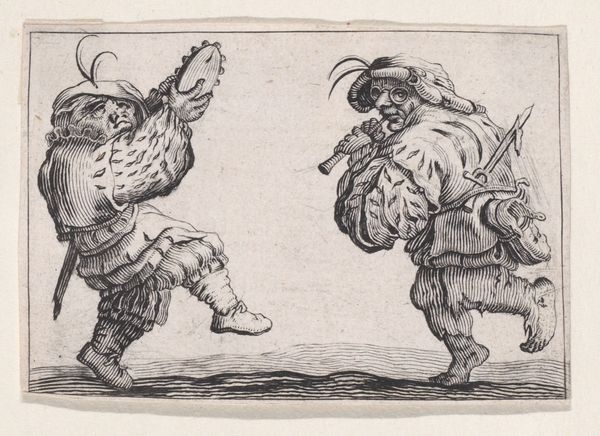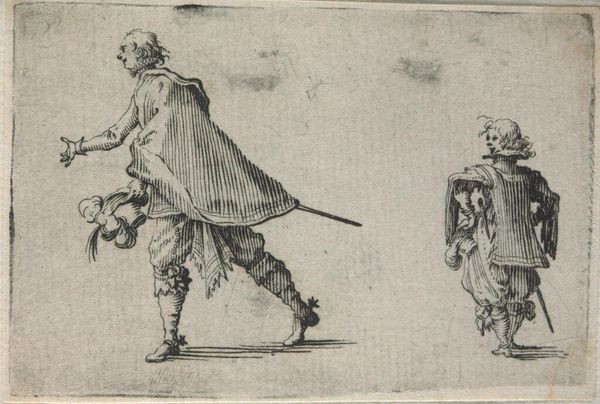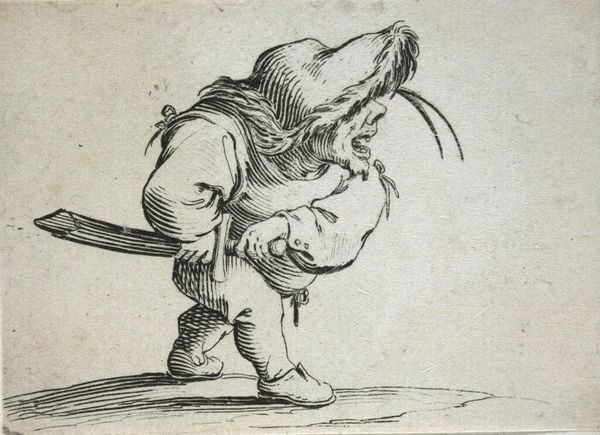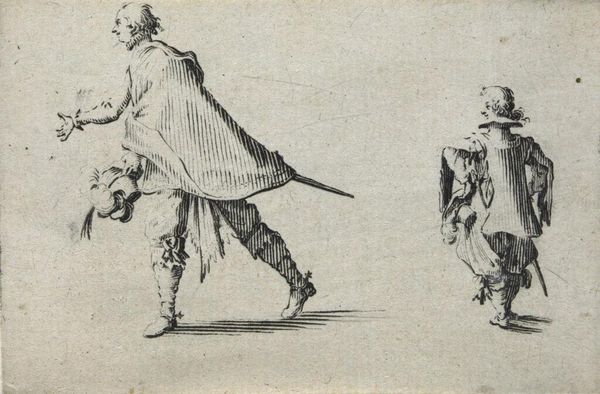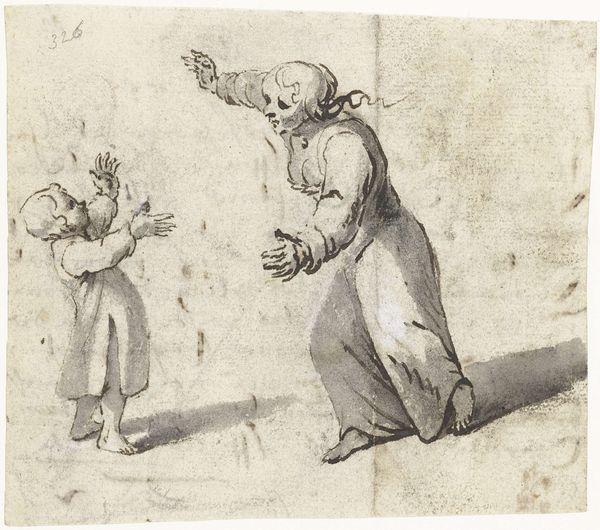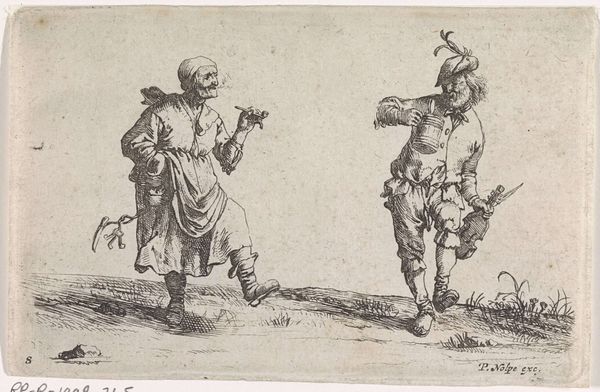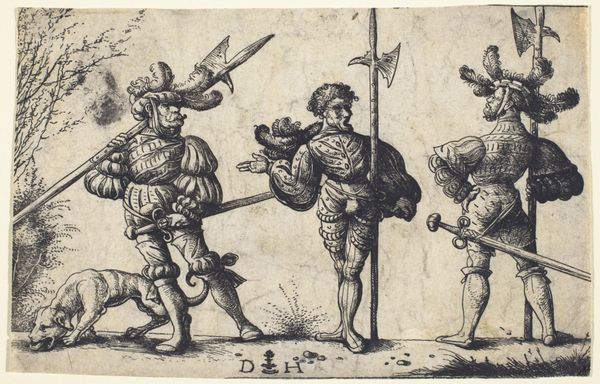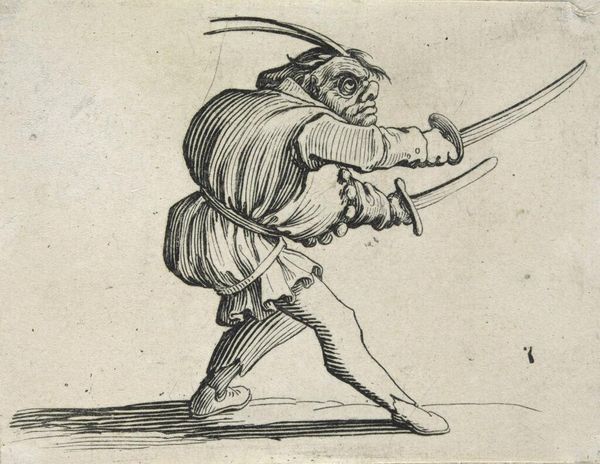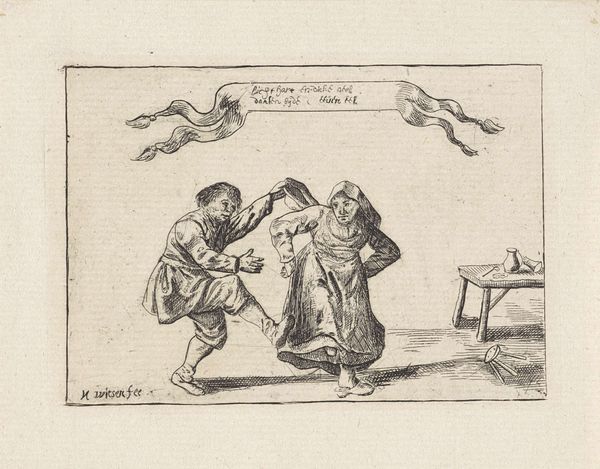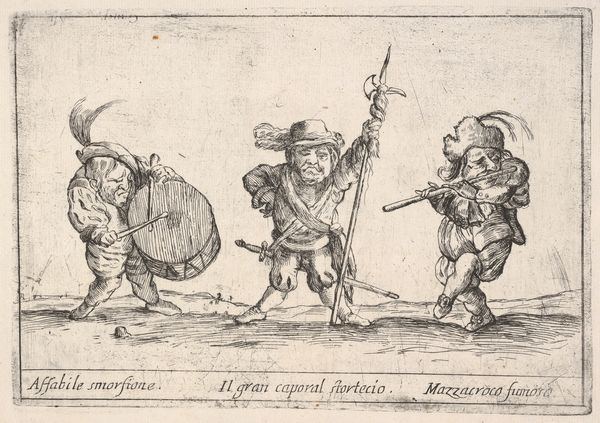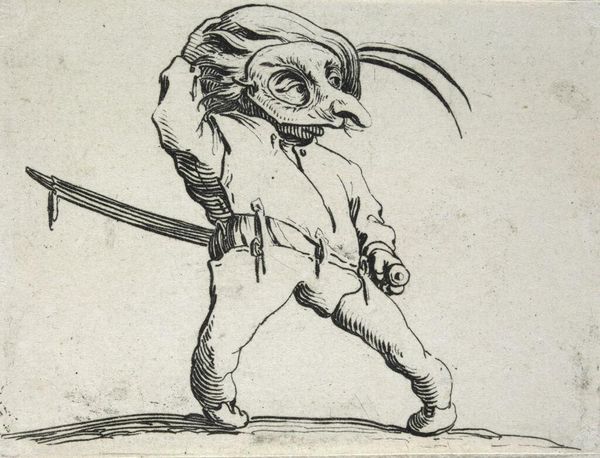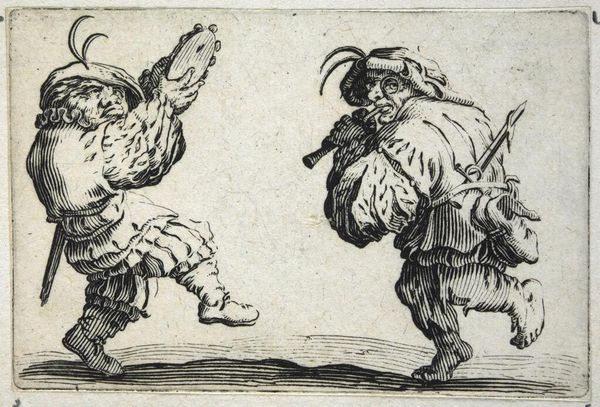
drawing, print, etching
#
drawing
#
narrative-art
#
baroque
# print
#
etching
#
pencil sketch
#
figuration
#
genre-painting
Dimensions: height 100 mm, width 140 mm
Copyright: Rijks Museum: Open Domain
Curator: The etching before us, from somewhere between 1620 and 1664, is titled "Twee dwergen met zwaarden in gevecht," or "Two Dwarves Fighting with Swords," by Stefano della Bella. Editor: It feels almost playful, despite the swords! The light is captured so delicately with those fine lines. It's strange and a little funny; they're not exactly your typical heroic figures. There's something about the diminutive scale that's rather appealing. Curator: Consider that Stefano della Bella, though Italian, created this work while in the employ of the Medici court in Florence, a court famous for collecting and displaying dwarfs. They were both servants and, strangely, status symbols. Della Bella specialized in prints that documented court life, festivities, even military exercises. Editor: So it’s documentation, then. I see this not so much as just depicting “dwarves fighting,” but perhaps about poking a little fun at the elite, perhaps? The material and process behind its production becomes inherently rebellious. Did it get him in trouble? Curator: There’s no record to suggest so. Remember, etching, and prints generally, served as both art and as disseminators of information. Its very accessibility challenges notions of exclusive, “high” art forms, while the social reality—dwarves employed for entertainment—complicates any romantic ideas of heroic individualism. Think about the market and consumption as well: this image had multiple buyers and multiple uses, potentially. Editor: True, though what resonates is their strange, quirky reality—miniature soldiers engaged in serious, if absurd, conflict. There’s something innately theatrical here. And there's the way della Bella chose etching, the quality and subtlety of the mark-making on the plate seems a fitting way of portraying a real life theatre of court entertainment, rather than something made for military planning. It shows skill, that is very clearly of a trained draughtsman. Curator: The fact that he made them comical only shows the normalness of that portrayal. These things can't simply exist alone. I mean the presence of an artist implies a patron who has tastes which they'd rather be met by a courtly professional! We also have to keep in mind, how the material realities shape and influence social practice. Editor: Right, and how looking at these diminutive swordsmen makes you really think about this weird mirror della Bella's holding up for us...It’s all kind of thought-provoking really. Curator: Absolutely.
Comments
No comments
Be the first to comment and join the conversation on the ultimate creative platform.
